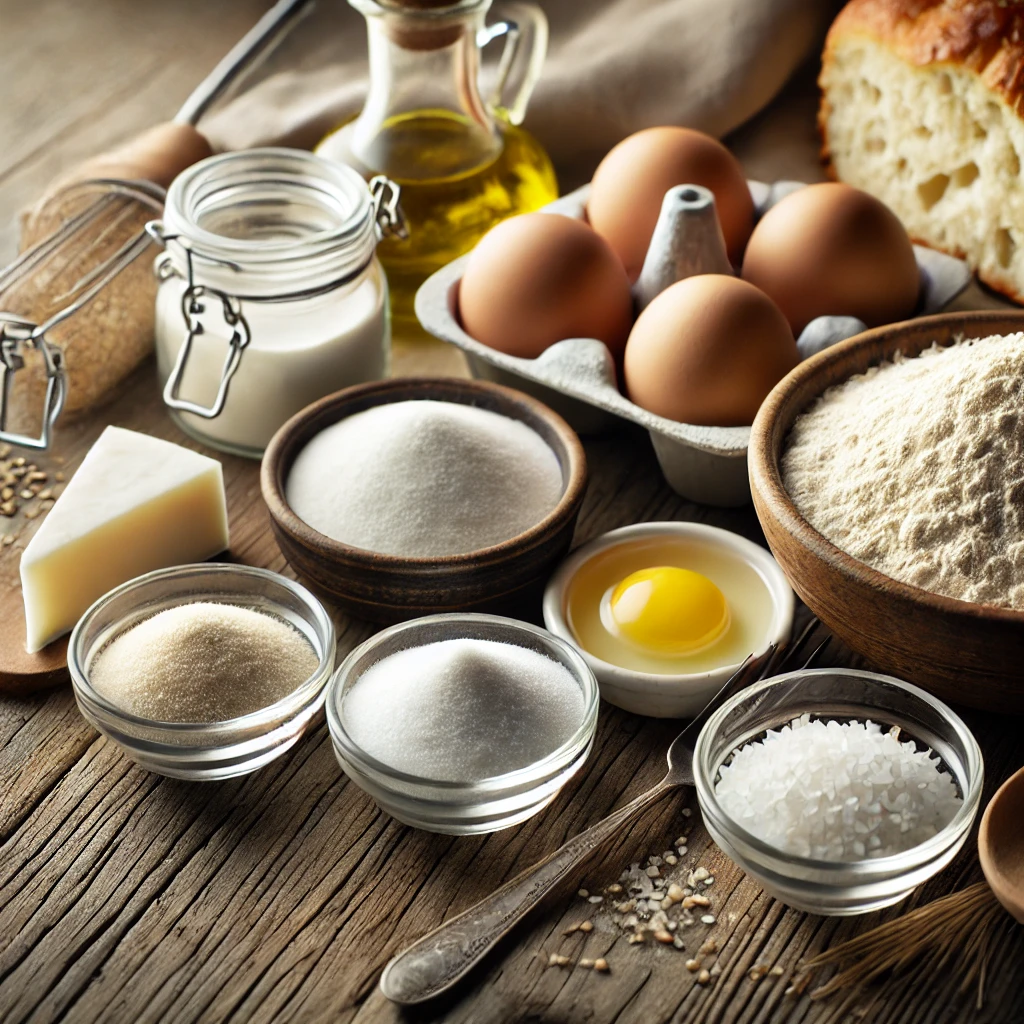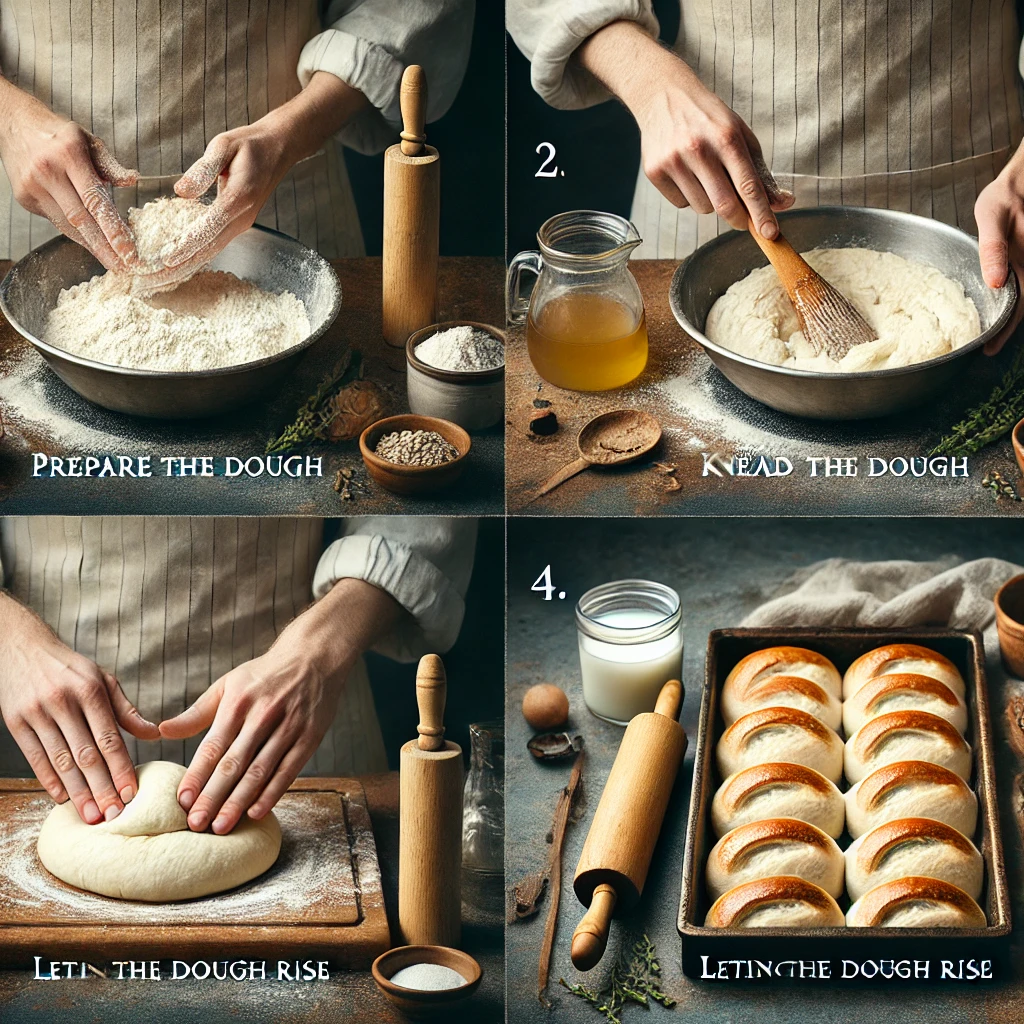Amish White Bread is a cherished classic that stands out for its simplicity, softness, and slightly sweet flavor. This homemade bread has become a staple in many kitchens, extending far beyond the Amish community. Whether you’re an experienced baker or just starting, Amish White Bread offers a straightforward recipe that allows you to create a perfect loaf, embodying the essence of traditional Amish baking.
History and Origin
The roots of Amish White Bread are deeply embedded in the traditions of the Amish community. Known for their self-sufficient lifestyle, the Amish have been perfecting the art of bread-making for generations. This bread plays a central role in their culture, symbolizing community and sustenance.
To truly understand its significance, it’s important to grasp the history of Amish culture, which emphasizes simplicity, humility, and hard work—all of which are reflected in this timeless recipe. Over time, the recipe has evolved, but its essence remains a simple, reliable bread that nourishes both body and soul.
Essential Ingredients

Making Amish White Bread requires just a few basic ingredients:
- Flour: Provides the structure and texture.
- Sugar: Adds sweetness and helps activate the yeast.
- Yeast: Leavens the bread, making it rise.
- Warm Water: Dissolves the sugar and activates the yeast.
- Oil: Keeps the bread moist and tender.
- Salt: Enhances flavor and strengthens the dough.
Each ingredient plays a crucial role in achieving the perfect loaf. You can even substitute honey for sugar or use whole wheat flour for a healthier twist without compromising quality.
For those interested in alternative baking options, exploring how to keep pound cake from being dry might offer insights into maintaining moisture in different kinds of baked goods. This technique is also helpful when adjusting this recipe.
Step-by-Step Guide

Preparing the Dough
- Dissolve the sugar in warm water in a large bowl. Stir in the yeast and let it sit until it forms a creamy foam, which takes about 5-10 minutes.
- Mix the oil and salt into the yeast mixture. Gradually add flour, one cup at a time, until a soft dough forms.
Kneading and First Rise
- Transfer the dough to a lightly floured surface and knead until smooth and elastic. This process is crucial for developing the bread’s structure.
- Next, place the dough in a well-oiled bowl, turning it to coat, then cover with a damp cloth. Allow it to rise in a warm place until it doubles in size, which usually takes about 1 hour.
Shaping and Second Rise
- After the dough has risen, punch it down and knead for a few minutes. Divide the dough in half, shape it into loaves, and place them into two well-oiled 9×5-inch loaf pans.
- Cover and let the dough rise again until it has topped the pans by about an inch, approximately 30 minutes.
Baking
- Preheat your oven to 350°F (175°C). Finally, bake the loaves until they are golden brown, which takes about 30 minutes. Let the bread cool on a wire rack before slicing.
Tips for Success
Here are some tips to ensure your Amish White Bread turns out perfectly:
- Avoid common mistakes like using water that’s too hot, which can kill the yeast, or not kneading the dough enough, which can result in a dense texture.
- If your dough doesn’t rise as expected, try placing it in a warmer area or check if your yeast is still active.
- For a soft, fluffy texture, make sure the dough is not too dry; add a little more water if necessary.
Proper storage is also key to maintaining freshness. Wrap your loaf in plastic or store it in a bread box at room temperature to keep it soft for several days.
If you’re looking for more inspiration in the kitchen, check out these best cottage cheese recipes for another way to explore simple, wholesome ingredients.
Health Benefits and Nutritional Value
While Amish White Bread may not be the lowest-calorie option, it can still fit into a balanced diet. The bread is a good source of carbohydrates, providing essential energy. For those seeking a healthier version, consider using whole wheat flour, which adds fiber and nutrients.
For more details on how to incorporate bread into a healthy diet, check out this resource on the nutritional benefits of homemade bread.
Variations
One of the joys of baking Amish White Bread is the opportunity to experiment with different variations:
- Sweet Variations: Add cinnamon and raisins to the dough for a delightful breakfast bread.
- Savory Variations: Incorporate herbs like rosemary or thyme, or mix in shredded cheese for a savory twist.
- Versatile Dough: This dough can also be used to create rolls, buns, or even pizza dough.
If you’re curious about other traditional bread recipes, you might enjoy learning about the history and cultural importance of Indian Frybread. Like Amish recipes, Indian Frybread holds a significant place in its community’s culinary heritage.
Serving Suggestions and Pairings
Amish White Bread is incredibly versatile and can be enjoyed in many ways:
- Sandwiches: It makes the perfect base for hearty sandwiches.
- Toast: Enjoy it as toast with butter, jam, or honey.
- Soups and Salads: Serve it alongside soups or salads for a complete meal.
This bread pairs wonderfully with simple spreads and toppings, making it a staple for any meal.
Cultural Significance
In Amish communities, bread is more than just a food item; it’s a symbol of hospitality and care. Baking bread is often a communal activity, bringing families and neighbors together. This type of bread is a testament to these values, reflecting the importance of tradition and community in Amish life.
When compared to other traditional Amish baked goods, such as pies and cookies, this loaf holds a unique place due to its simplicity and everyday presence on the table.
Frequently Asked Questions (FAQs)
- What makes this bread different from other white bread?
- It’s the perfect blend of sweetness and soft texture, made with simple, everyday ingredients.
- Can I freeze this bread? How?
- Yes, you can freeze it. Wrap it tightly in plastic wrap and then in foil. It can be stored in the freezer for up to three months.
- How long does this bread stay fresh?
- It stays fresh for about 3-4 days when stored properly at room temperature.
- Can I make this bread in a bread machine?
- Yes, the recipe can be adapted for a bread machine by following the manufacturer’s instructions.
This recipe is a true testament to the simplicity and charm of Amish baking traditions. Its easy-to-follow process, delightful taste, and versatility make it a favorite in many kitchens. Whether you’re enjoying it fresh out of the oven or experimenting with variations, this bread is sure to become a staple in your home.
The enduring popularity of this bread lies in its ability to bring warmth and comfort to the table. Therefore, it’s more than just a loaf of bread—it’s a piece of tradition and a symbol of the simple joys in life.
